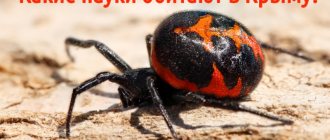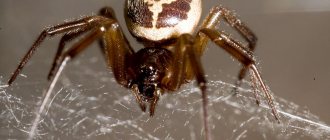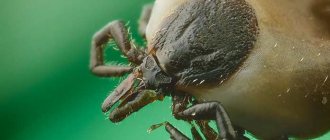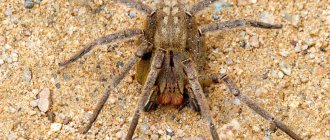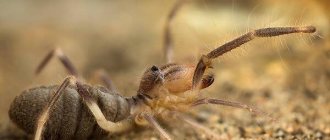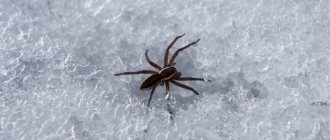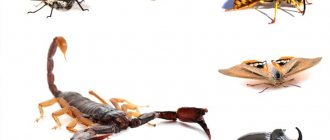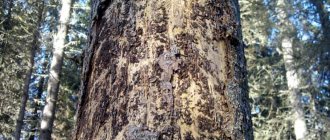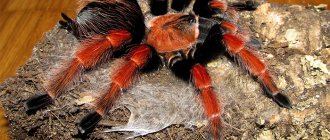The development of mountain tourism in Kazakhstan has led to the fact that people who previously knew nothing about this country began to come there. The websites of travel agencies will tell you about the delights and beauties of the Kazakhstan mountains. But beauties often come with dangers. The worst ones are those that can't be checked or planned for. These unintended dangers include snakes and spiders in Kazakhstan because they are living creatures. They can move and end up in an unexpected place. Including in a tourist tent.
Snakes try to avoid people, most species of spiders do not leave their nests (but no one knows where the next arthropod will decide to settle), but arachnids love to travel. The latter include salpugs and scorpions. All poisonous spiders and arachnids in Kazakhstan have a fairly characteristic appearance. Photos and descriptions are usually enough to recognize the danger during a “personal” meeting.
There are few poisonous spider species in Kazakhstan compared to the variety of dangerous spiders in Australia. But almost all the dangerous spiders of Europe “gathered” in it:
- thirteen-point karakurt;
- Dahl's karakurt;
- white karakurt;
- Heyracantium yellow;
- tarantula.
On a note!
In addition to these species, the country is home to harmless jumping spiders, cross spiders, funnel-web spiders, house spiders and many others. Invertebrates in Kazakhstan are poorly studied and the exact number of spiders is unknown.
Karakurt
It lives in the desert zone, which occupies almost all of Southern Kazakhstan and part of Central Kazakhstan. A medium-sized animal with strong sexual demorphism. The size of the male is about 5 mm and this animal is completely safe for humans.
Karakurt
The female is a serious opponent not only for her prey. The main Kazakh livestock are very sensitive to the venom of this 2 cm arthropod: camels and horses.
Interesting!
Cows and sheep are resistant to karakurt poison.
The Karakurt species Latrodectus tredecimguttatus is a black spider with red or whitish spots on the abdomen. Due to the number of spots, this species is called “thirteen-spotted”. Red spots can be outlined by a white stripe and then look convex. The abdomen is spherical, much larger than the cephalothorax. There is no bristles on the animal, so it looks shiny.
A karakurt bite leads to severe painful spasms throughout the body. All the signs of severe general poisoning are also present. In later stages, excitement gives way to depression. Sometimes the case ends in the death of the victim. To counteract the poison, antikarakurt serum is used.
Karakurt Dalia
Latin name Latrodectus dahli. The difference from the previous type of karakurt is its pure black color without any inclusions. Otherwise, both types of these spiders are identical.
Karakurt Dalia
They build nests at the base of bushes, entwining them with randomly arranged threads. In the desert they prefer to hide in the shadows of animal holes. Sometimes they even coexist peacefully with the real owner of the shelter.
On a note!
Thirteen-spotted and Dahl's karakurt can interbreed with each other, producing intermediate offspring. This makes it difficult for arachnologists to identify a specific individual, but for the average tourist this does not matter. It is enough to remember that spiders with red spots and pure black ones are karakurts.
White karakurt
The only “blonde” among poisonous spiders in Kazakhstan, although its range extends throughout Central Asia and the Middle East, covering Russia and North Africa. This is a species more adapted to cold weather than black karakurts. It chooses habitats in the steppe and desert zones, so it can be found not only next to its black counterparts, but also in Western Kazakhstan.
White karakurt
The habits are similar to other spiders of the black widow genus. The appearance differs from Dahl's karakurt only in color. The white karakurt got this name for a reason. His belly is completely white. The cephalothorax is also devoid of pigment and, due to the characteristics of the chitinous integument, has a light brown color. Due to the lack of pigment, the cephalothorax appears translucent.
On a note!
Since this is the least poisonous species, it is not dangerous for an adult. But the effect of the poison is similar to the effect of black karakurt toxins. With a weakened body, even white poison can lead to death. Such cases have been recorded in the elderly and children.
What other spiders should Kyrgyzstanis be wary of?
There is a tarantula in our country.
These are the so-called wolf spiders. They do not weave nets, but catch insects and other small arthropods by chasing them. The clinical strength of a sting is usually calculated using the equivalent of a bee sting on an average citizen who does not have allergic reactions. The bite of a tarantula ranges from one to three to five bees. Tarantula spiders are also found in Kyrgyzstan (in general, all tarantulas are divided into poisonous and not so poisonous). There are several species not far from Bishkek, but they are extremely rare, and have also decreased in size - they have become burrowers due to the winter cold. But this did not stop them from being tarantulas. By the way, tarantulas live 30-35 years.
Heiracanthium yellow
The second name of the spider is yellow sak. Cheiracanthium received the adjective “yellow” because of its dirty yellow color. Thanks to this color, it is invisible against the background of withered grass in the steppe. This spider prefers arid regions and is distributed from Central Asia to Central Europe. Today it has begun to penetrate into more northern and colder areas. The range is expanding due to climate change, as the spider prefers relatively hot regions. In Kazakhstan it can be found everywhere except Eastern Kazakhstan, where winters are very harsh.
Heiracanthium yellow
On a note!
Heiracanthium weaves a web on steppe grasses. The spider's body length is 1.5 cm. Its prey is agricultural pests with hard chitinous shells. Because of this, spider chelicerae are adapted to pierce hard covers, and human skin is not an obstacle for them.
In terms of the effectiveness of the venom and the pain from the bite, this yellow spider is equal to the wasp. A spider bite does not cause serious consequences, although pain and swelling persist for several hours.
Appearance and features
Photo: What a phalanx spider looks like
The body of the hodgepodge is divided into two parts:
- prosoma (shell);
- opisthosoma (abdominal cavity).
The prosoma consists of three sections:
- propeltidium (head) contains chelicerae, eyes, pedipalps and the first two pairs of legs;
- mesopeltidium contains a third pair of legs;
- metapelptidium contains a fourth pair of legs.
Outwardly, the phalanx spider appears to have 10 legs, but in fact, the first pair of appendages are very highly developed pedipalps, which are used for various functions such as drinking, catching, feeding, mating and climbing. Only the three rear pairs of legs are primarily used for running. The most unusual feature is the unique organs at the tips of the legs. Some spiders can use these organs to climb vertical surfaces.
The first pair of legs is thin and short and is used as tactile organs (tentacles). The phalanges lack a patella (a leg segment found in spiders, scorpions and other arachnids). The fourth pair of legs is the longest. Most species have 5 pairs of ankles, while juveniles have only 2-3 pairs. They were assumed to be sensory organs for detecting vibrations in the soil.
Body length varies from 10-70 mm, and leg span up to 160 mm. The head is large and supports large, strong chelicerae (jaws). The propeltidium (carapace) is raised to accommodate the enlarged muscles that control the chelicerae. Because of this elevated structure, they are often called "camel spiders" in the English-speaking segment. The chelicerae have a fixed dorsal digit and a movable ventral digit, both armed with cheliceral teeth for crushing prey. These teeth are one of the features used in identification.
Some species have very large central eyes. They can recognize shapes and are used to hunt and spy on enemies. These eyes are remarkable for their internal anatomy. Many species lack lateral eyes, and where they exist at all, they are only rudimentary. The abdomen is soft and expandable, allowing the animal to eat large quantities of food. The body of many species is covered with bristles of varying lengths, some up to 50 mm, resembling a shiny hairball. Many of these bristles are tactile sensors.
Tarantula
The main poisonous spiders in Eastern Kazakhstan are tarantulas. Wolf spiders, which include tarantulas, like their mammalian namesakes, have adapted to life in any conditions. Even the winters of Eastern Kazakhstan with their -50°C do not frighten tarantulas. Spiders that are more dangerous to humans prefer warm places.
Tarantula
The most numerous species not only in the eastern part, but throughout the country is the South Russian tarantula. Due to the very favorable living conditions in the summer in Kazakhstan, this species grows 2 times larger than usual and reaches 5 cm. The color of these spiders can be greenish-gray, gray or yellow-gray.
On a note!
Tarantulas are true earth spiders that build their own burrows. They dig deep vertical “wells” in which they wait for prey. The probability of accidentally disturbing a tarantula, unlike a karakurt, is very small. But tarantulas hunt at night and can crawl into a tent in search of prey.
They do not like to settle only in the forest. They are found in forest-steppe, steppe, semi-desert and desert areas. That is, throughout the entire territory of Kazakhstan.
What other insects can harm human health?
Big trouble can be caused by the Wohlfarth fly, which shoots a larva into the eye where it will live and causes big trouble. Mostly the fly throws larvae into the eyes, nostrils, and wounds of animals, but it happens that humans also suffer. The larva can settle very deeply and then fly out of the eye like a fly. Larvae and botflies are deposited in wounds, after which ulcers form at the site of deposition. It is important not to confuse it with a horsefly, because the gadfly does not bite: it does not have a mouth. Horseflies are large blood-sucking flies. They pierce the skin, causing an acute painful sensation. The saliva of horseflies contains substances that prevent blood clotting, so blood oozes from the wound on the skin, the skin turns red and swells.
Central Asian salpuga
Karakurt is not the only danger in Kazakhstan. In addition to spiders, there are salpugs (phalanxes). These are arachnids belonging to the order phalanges. Nowadays, representatives of the order are usually called salpugas, so as not to be confused with the order Phalangida, consonant with the phalanges - arachnids better known as haymakers (kosinozhki).
Central Asian salpuga
Interesting!
Although from a biological point of view, salpuga does not belong to real spiders, the name phalanx - spider - has been used in Kazakhstan since ancient times. Often in Central Asia it is called the camel spider.
The Central Asian salpuga grows up to 7 cm. The color is camouflage: gray-yellow. This is a nocturnal hunter who is able to crawl into a home at night. Salpuga differs from spiders not only in the absence of arachnoid and poisonous glands. She has 2 pairs of mandibles with teeth instead of one pair of chelicerae and 5 pairs of walking legs versus the spider’s 8 legs.
Small salpugs are not dangerous to humans, as they are not able to bite through the skin. Large ones can infect sepsis when bitten, since decaying pieces of flesh from the previous victim remain on the mandibles.
Social structure and reproduction
Photo: Camel spider in Russia
With the onset of the mating season, the female begins to emit a specific smell, which the male smells with the help of his pedipalps. Mating occurs at night, after which the male must quickly retreat as the female begins to show signs of aggression.
Fertilized female phalanges are particularly gluttonous. During copulation, they are so passive that the male has to drag them along with him. But at the end of the process, the females become so excited that the male has to run away so as not to become a snack.
The male releases a sticky spermatophore onto the ground, collects it with chelicerae and inserts it into the female’s genital opening. The process takes several minutes. The movements of the male during mating are reflexive. Once the process has begun, the male will not complete it, even if the female or spermatophore is removed from him.
The fertilized female begins to feed intensively, after which she digs a hole and lays 30-200 eggs of different types in it. The development of embryos begins in the female’s oviducts, so after 2-3 weeks small spiders are born.
At first, the young are practically motionless, without hairs, covered with a thin cuticle. After a couple of weeks, molting begins, the integument hardens, the babies grow hairs and make their first movements. At first, the female takes care of the offspring, looking for food until the cubs get stronger.
